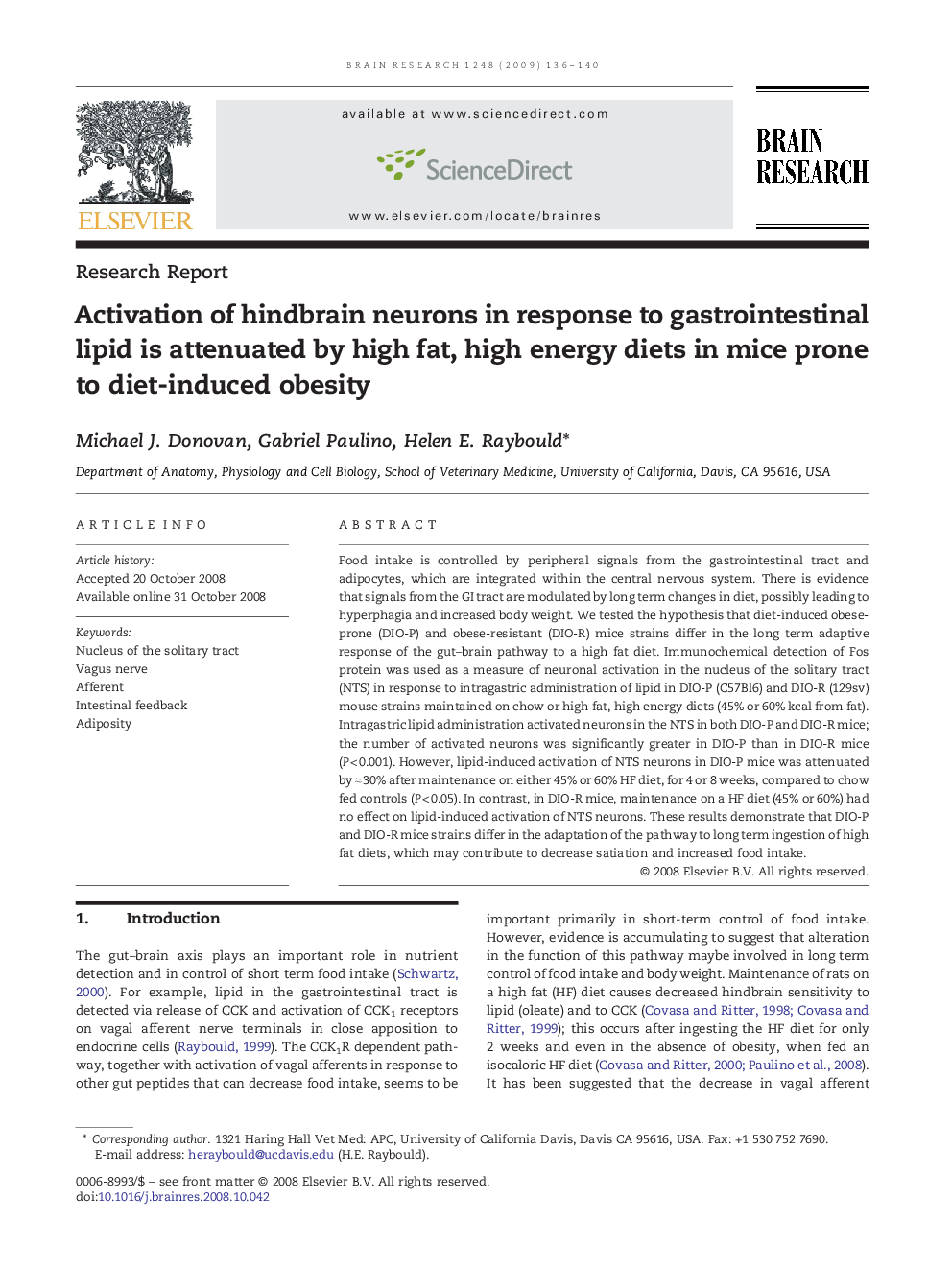| Article ID | Journal | Published Year | Pages | File Type |
|---|---|---|---|---|
| 4328796 | Brain Research | 2009 | 5 Pages |
Abstract
Food intake is controlled by peripheral signals from the gastrointestinal tract and adipocytes, which are integrated within the central nervous system. There is evidence that signals from the GI tract are modulated by long term changes in diet, possibly leading to hyperphagia and increased body weight. We tested the hypothesis that diet-induced obese-prone (DIO-P) and obese-resistant (DIO-R) mice strains differ in the long term adaptive response of the gut-brain pathway to a high fat diet. Immunochemical detection of Fos protein was used as a measure of neuronal activation in the nucleus of the solitary tract (NTS) in response to intragastric administration of lipid in DIO-P (C57Bl6) and DIO-R (129sv) mouse strains maintained on chow or high fat, high energy diets (45% or 60% kcal from fat). Intragastric lipid administration activated neurons in the NTS in both DIO-P and DIO-R mice; the number of activated neurons was significantly greater in DIO-P than in DIO-R mice (P < 0.001). However, lipid-induced activation of NTS neurons in DIO-P mice was attenuated by â 30% after maintenance on either 45% or 60% HF diet, for 4 or 8 weeks, compared to chow fed controls (P < 0.05). In contrast, in DIO-R mice, maintenance on a HF diet (45% or 60%) had no effect on lipid-induced activation of NTS neurons. These results demonstrate that DIO-P and DIO-R mice strains differ in the adaptation of the pathway to long term ingestion of high fat diets, which may contribute to decrease satiation and increased food intake.
Related Topics
Life Sciences
Neuroscience
Neuroscience (General)
Authors
Michael J. Donovan, Gabriel Paulino, Helen E. Raybould,
